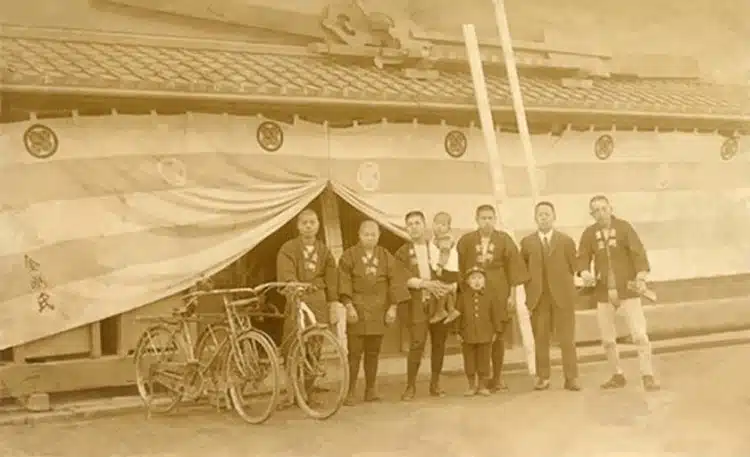But none have run longer thanKongo Gumi.
This construction company was founded in 578 CE.
One of these carpenters, Kongo Shigetsu, formed the company and the rest is history.

Shitennō-ji around 1880 (Photo: Kusakabe Kimbei – The New York Public Library Digital Collections viaWikimedia Commons, Public domain)
They were also kept busy asBuddhismspread across the country, causing a boom in the construction of Buddhist temples.
But that’s not the only reason for Kongo Gumi’s success.
Their workers were highly skilled, with apprentices having to work for 10 years to hone their craft.

Kongō Yoshie, the 38th master carpenter of Kongō Gumi and employees, 1930. (Photo: 撮影者 不明 viaWikimedia Commons, Public domain)
To be considered master carpenters, they would need to toil for yet another decade.
The company also organized its workers intokumi,independent groups with specific skill sets who work together on projects.
This tradition continues today and allows the workers to push each other and to share knowledge.
Kongo Gumi has also remained flexible in the face of challenges that will naturally occur during a 1,400-year business.
During World War II, the company pivoted to building coffins as temple construction ground to a halt.
They also showed a willingness to incorporate new technology while retaining traditional building methods.
For instance, after the Meiji Restoration, they began incorporating concrete into their designs.
Later, they would pioneer the use of CAD (computer-aided design) for temples.
Once, a female family member was even brought in to run things.
She also separated managerial positions from carpentry positions, which helped the firm flourish.
Until 2006, Kongo Gumi operated as an independent entity.
That year, it becamea subsidiaryof the Takamatsu Construction Group.
According to a2023 business profile, the company has 110 employees,up from 80 when it was acquired.
As the daughter of the 40th head of the family, she is the 41st head carpenter.
Kongo Yoshie, the 38th master carpenter of Kongo Gumi and employees, 1930.